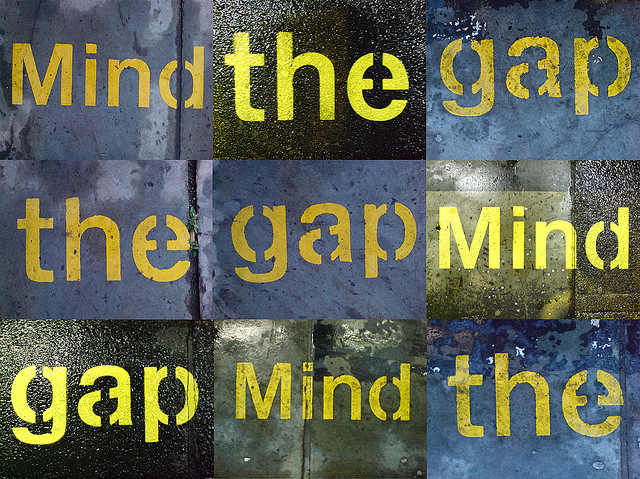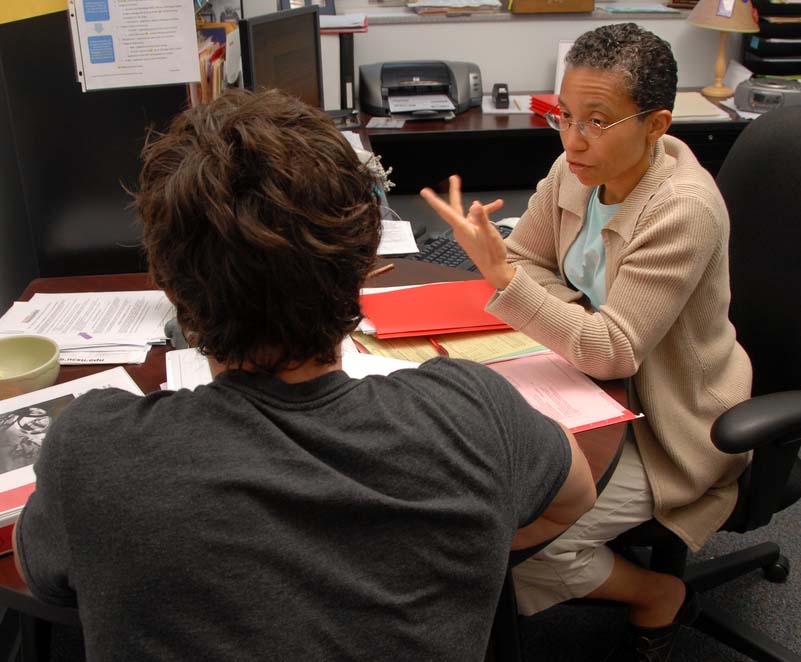
Follow the web link below to hear and see a truly wonderful spontaneous event involving Virginia State’s choir you wont’t soon forget:
http://www.nbc12.com/story/30869185/virginia-state-university-gospel-chorale-serenades-passengers-on-plane

Follow the web link below to hear and see a truly wonderful spontaneous event involving Virginia State’s choir you wont’t soon forget:
http://www.nbc12.com/story/30869185/virginia-state-university-gospel-chorale-serenades-passengers-on-plane
 In today’s Washington Post, Fareed Zakariah does an excellent job of pin pointing the true source of fear and hatred that Donald Trump has tapped into for his political success. It’s very insightful. Check it out and let me know what you think.
In today’s Washington Post, Fareed Zakariah does an excellent job of pin pointing the true source of fear and hatred that Donald Trump has tapped into for his political success. It’s very insightful. Check it out and let me know what you think.
 A recent article in the New York Times focused on achievement gaps caused by socio economic differences instead of racial differences between students in America. These achievement gaps begin to show up early – cognitive differences start to appear in children from the top and bottom socio economic sectors in America before kindergarten and only increase as they progress through school. Furthermore, the achievement gap between high and low income students has increased. Since 1970, the achievement gap on standardized test of reading has increased by almost 40% between the 10th and 90th percentile household income .
A recent article in the New York Times focused on achievement gaps caused by socio economic differences instead of racial differences between students in America. These achievement gaps begin to show up early – cognitive differences start to appear in children from the top and bottom socio economic sectors in America before kindergarten and only increase as they progress through school. Furthermore, the achievement gap between high and low income students has increased. Since 1970, the achievement gap on standardized test of reading has increased by almost 40% between the 10th and 90th percentile household income .
What this means is that there is limited upward mobility in America – more limited than in most first world countries. A child born to parents with income in the lowest bracket is ten times more likely to end up in that same lower bracket than they are to rise to the highest bracket as an adult (43 percent versus 4 percent). And, a child born to parents in the highest income bracket is five times more likely to stay there than end up there than the lowest (40 percent versus 8 percent). These results run counter to the historic vision of the United States as a land of equal opportunity.
The good news is that a college degree can make a big difference. Without a college degree a child born into a family in the lowest income bracket has a 45 percent chance of staying there forever and only a 5 percent chance of moving up into the top bracket. Children born into the lowest income bracket who do earn a college degree have only a 16 percent chance of staying there and a 19 percent chance of moving up into the top bracket.
Upward mobility means more than just money. Parents in higher socioeconomic brackets invest not only more money in their children, but more time as well. On average, mothers with a college degree spend 4.5 more hours each week engaging with their children than mothers with only a high school diploma or less. This means that, among other things, by age three, children of parents who are professionals have vocabularies that are 50 percent larger than those of children from working-class families, and 100 percent larger than those of children whose families receive welfare, disparities that some researchers ascribe to differences in how much parents engage and speak with their children. By the time they are three, children born to parents who are professionals have heard about 30 million more words than children born to parents who receive welfare. Additional language skills put child at a distinct advantage when they start school and will probably follow them throughout their educational career.
All of this information makes getting a college degree even more important for all students – especially disadvantaged students. It’s the best investment they can make with a higher return than any other way to invest the cost of a college education. It doesn’t just mean more money, it can mean changing the path taken in life. If you’re in high school now, do the best you can and do everything you can to get a college degree. If you are in college, stay there until you’re finished. Getting that degree can be a life changing experience for you and for all the stakeholders in your life.
In GradeUP Challenge #6, I showed you how to create your own outlines to help you learn in a way that best suits you. Another reason to create personalized outlines is so that you read about and understand the underlying concepts before trying to use them to answer questions and solve problems. This applies to all classes and all levels of study.
A student I’m advising came to my office thoroughly frustrated because she was failing economics for the third time. She said she was able to answer questions on tests but couldn’t do the problems – even after doing the homework assignments. I asked her how she did the problems assigned. Here is her process:
After all this effort, she couldn’t even figure out how to get started with problems on tests. I told her she needed to use the outlining techniques that I shared with you in Challenge #6 to understand the concepts that the problems are based on before trying to solve them. Here’s a the process:
There is more in-depth information on creating your problem solving strategies in Chapter 19 of College In Four Years.
 In the last post, I talked about how to use your textbook to prepare for and get the most out of your classes. You’re a few weeks into the semester so you’re probably preparing for a test on the material you’ve covered so far – let’s talk about how you prep for that.
In the last post, I talked about how to use your textbook to prepare for and get the most out of your classes. You’re a few weeks into the semester so you’re probably preparing for a test on the material you’ve covered so far – let’s talk about how you prep for that.First, don’t use your textbook to study for your test – it was never meant for that. The textbook is a reference source of all information about certain topics and concepts – you can’t remember all of what is in there. That’s why there are study guides that go with textbooks. However, you need to create your own custom study guide, one that works for you, not a generic one written by someone else. The best way to fully grasp the information that you’ll need to retain for an exam and use as a foundation for more learning is to process what’s in the text – not memorize the text. Here’s how you do that:
Yes, this will take time – a lot longer than just reading the material but it is the best way to actually understand and be able to use what you learned when test time comes because doing your study guide well requires that you understand everything you outlined. You can’t finesse this – you’ve either got it or you need to go back to your resources and get it. Getting that understanding and creating your study guide is when learning takes place. When you’re finished, you will know and understand everything in it because that is the only way you could have done the guide well. A bonus, you’ve already started your comprehensive study guide for finals!
In Chapter 11 of College In Four Years, “How to Use Your Textbook the Right Way,” you’ll find more information on how to outline different types of study material to maximize understanding and ensure it works well for you.
Next GradeUp! Challenge, Tuesday, February 24.
 You are going to need help to complete college successfully. Everyone does. If you’re in college to earn a degree and graduate with great job prospects, you’ll need some help along the way. Be it academic, career planning, social or emotional issues – stuff comes up during the semester and there are resources on campus to get you the help you need. To access the right advice at the right time the following rules always apply:
You are going to need help to complete college successfully. Everyone does. If you’re in college to earn a degree and graduate with great job prospects, you’ll need some help along the way. Be it academic, career planning, social or emotional issues – stuff comes up during the semester and there are resources on campus to get you the help you need. To access the right advice at the right time the following rules always apply:
Never hesitate to ask for assistance. If you think you need help, ask. If you think you’ve got this, ask anyway. In college you are surrounded by a wealth of information; access as much of it as you can, whenever you can. At no other time in life will you be in a place where the primary goal and objective of everyone there is to help you succeed.
Go to the source. When you need information that’s important to your success always go to the source of that information and, when you can, go to more than one source to verify what you have been told. Don’t go the source that is convenient or that will give you the information you want to hear – like your roommate, Facebook, the Internet or people who can only tell you what they’ve “heard.” Remember, an opinion spoken and repeated twice becomes fact. The first time it’s “I think” the second time it’s “I heard” and the third time it’s a fact! Don’t be misled this way. Go to the person who is responsible for creating and disseminating the information you need. You’ve been to see your advisor – (Challenge #1) and you should have talked to your professors (Challenge #3). Visit the registrar to confirm you’re on track to graduate on time. Register with the career office to get information on the job market. If you didn’t get the information you seek directly from the source – it’s all just hearsay.
Go to the decision maker. Make sure you are always dealing with the decision maker and that they are empowered with the authority to make a decision and stand by it. No one else can give you the definitive answers you need. Others can tell you about decisions that have been made in the past or what they think about the decision; but if they are not the decision maker, they can’t ensure your outcome and the only one with something at risk is you. Don’t take chances with your college success. Always go to the person with the authority to make a decision you can count on – preferably in writing.
Knowing when, where and who to ask for advice is key to success in college and in life.
Next GradeUP! Challenge post on Tuesday, February 17.
 If you haven’t yet visited the professors for the classes you’re taking this semester, Go Now! Make sure your teachers know you and understand that you’re serious about doing well in their classes. If they know you as more than just a name— you give your professors the opportunity to respond to you as a person, not just a name or number on the class roll.
If you haven’t yet visited the professors for the classes you’re taking this semester, Go Now! Make sure your teachers know you and understand that you’re serious about doing well in their classes. If they know you as more than just a name— you give your professors the opportunity to respond to you as a person, not just a name or number on the class roll.
See every teacher from every course, outside of the class time, at least once during the semester. The biggest chunk of the money you spend on college pays for your professors, so go see them, make them know you, let them help you and get your money’s worth!
When you go to see your professor, you’re not just going to introduce yourself – try to accomplish the following:
Get more information and advice on the benefits of talking to your professors and, read about the time a visit to a professor saved my grade in Good Players Talk to the Coach, Chapter 15 of College in Four Years. If you don’t yet have College in Four Years, during the GradeUP! Challenge you can purchase the book for $14.99 (normally $19.99), a special 25% discount. I’ve set up a special College in Four Years storefront that will only be open during the Challenge and it is the only place you can buy the book for $14.99.
To get the discount enter the code BBQ86MXV at checkout from the special College in Four Years GradeUP! Challenge storefront. Use this direct link to the storefront.
If you prefer an eBook, you can purchase it for $9.99 on Amazon.com.
Next GradeUP! Challenge,Thursday, 2/12: Why your professor isn’t the only person you need to see.
 Read the syllabus for each class you’re taking. Really read them – all of them. Find out what is expected of you and when, then use a planner – paper, electronic, virtual – and plan out what you need to do and when you plan to do it so you stay current in all your classes. If you don’t have a system for scheduling your time – get one NOW! Don’t get behind because trying to catch up and keep up at the same time is a losing proposition.
Read the syllabus for each class you’re taking. Really read them – all of them. Find out what is expected of you and when, then use a planner – paper, electronic, virtual – and plan out what you need to do and when you plan to do it so you stay current in all your classes. If you don’t have a system for scheduling your time – get one NOW! Don’t get behind because trying to catch up and keep up at the same time is a losing proposition.
From the syllabus in every class you should:
The next Challenge posts on Tuesday, 2/10/15. Learn more about the GradeUP! Challenge here.
To let me know what you think about this post and the GradeUP! Challenge, please leave a comment below.
 One of your most valuable and probably most under-utilized resources is your academic advisor. They do more than sign your advisement form. Your adviser actually has the best view of your academic future – no crystal ball needed. With access to your academic past (what courses you’ve already taken), present (what courses you’re taking now) and future (what you’ll need to graduate) and the experience they’ve gained from successfully shepherding other students through the college experience – they have some valuable skills.
One of your most valuable and probably most under-utilized resources is your academic advisor. They do more than sign your advisement form. Your adviser actually has the best view of your academic future – no crystal ball needed. With access to your academic past (what courses you’ve already taken), present (what courses you’re taking now) and future (what you’ll need to graduate) and the experience they’ve gained from successfully shepherding other students through the college experience – they have some valuable skills.
Meet with your advisor as early in the semester as possible – before the drop/add date in case you need to make changes to your schedule. When you see your advisor do the following:
Get more information and advice on working with your advisor in Chapter 9 of College In Four Years.
Let me know what you think about this post and the Challenge. Please leave a comment below.
The next Challenge posts on Thursday, 2/5/15. Learn more about the GradeUP! Challenge here.
Contrary to popular belief, the value of a study group is not to share notes and study together – it is to test your knowledge of material you acquire for yourself. The best way to actually learn and assimilate information is to study alone – by taking your own notes in class, in discussions with your professors or reading assigned material. It is a fallacy to believe that you can use someone else’s notes and knowledge to assimilate knowledge for yourself. Information you seek to acquire from actions taken by others – is proprietary; you can’t buy it, borrow it or steal it, here’s why:
* The person that took those notes learned and assimilated information, then made notes best suited to their learning style, not yours.
* Your learning process did not kick in, no matter how carefully you read their notes. Why? Because you didn’t put in the time on those notes; the person who created them did.
If all you need to do is memorize, then you can probably use someone else’s notes. If you need to understand the material at a deeper level and use it formulate answers to questions and/or solutions to problems, you must do more, you have to know it for yourself.
Let me tell you a story from my book, “College in Four Years,” to illustrate how studying together, might end in your failing alone. Seven students in a class I was teaching formed a study group. They divvied up taking notes and making outlines from class. They met regularly and exchanged notes and problem solutions to study for exams that covered all the material they were responsible for. They all ended up failing my class.
After talking extensively to them as a group, as well as individually, I figured out that they had each mastered about 1/7th of the information in the class – equal to the notes and material that they had been responsible for in the study group. Some students knew more than others but none of them knew much more than they had studied for themselves. If you master just 14% of the class material, there is no legitimate way you’re going to pass.
I explained to them that the value of a study group is to test your understanding of what you already know. Needless to say, the students were skeptical of my theory. So I asked the students to bring me their group notes for the course, with each set identified by the student who made them. I asked the group questions; however, the student who took the related notes could not answer. For the most part, the students did not know or only partially knew answers from notes made by their counterparts. They were surprised.
“We read through every set of notes,” they said, “We were sure we knew the material.”
These students found out the hard way that group knowledge is not the same as individual knowledge. They took a shortcut and relied on the study group to split up the work so each person could do less. A better way would have been the two-step strategy for study groups:
1.Gather and learn information independently by taking your own notes which summarize study material in a meaningful way that you understand and can use.
2.Then, get together and ask one another questions to test everybody’s understanding of the material.
This is how your study group becomes a valuable resource. Your study partners can test your understanding of the material studied much better than you can on your own. The students who do less get less for it – when students do more, they get the most out of it.